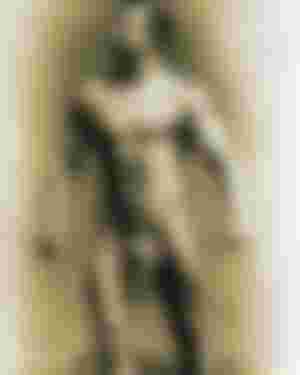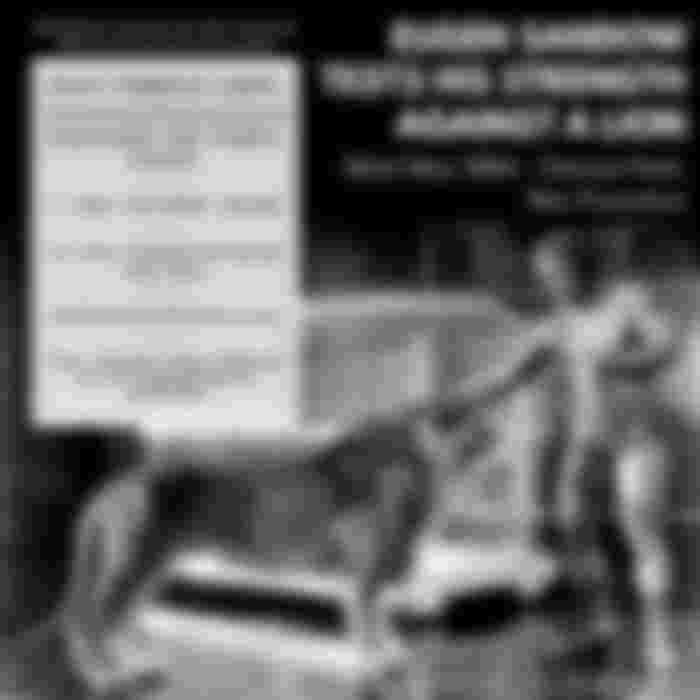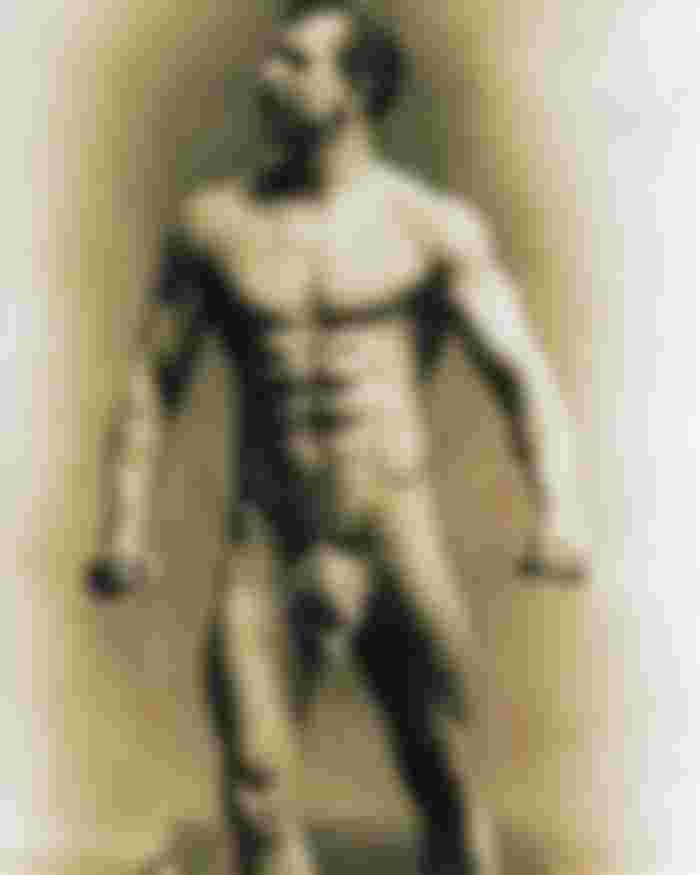First let me thank my wonderful sponsor @foryoubtc09 for making my day yesterday.
Thank you🙇
In 1894, bodybuilder and strongman Eugen Sandow demonstrated his strength by wrestling a lion — but it didn't quite go to plan.
There’s a peculiar link between strongman and combat sports. You may immediately think of the Sept. 18, 2021, boxing match featuring 2018 World Strongest Man (WSM) winner, Hafthor Björnsson and arm wrestler Devon Larratt. (Originally, Björnsson was set to fight 2017 WSM Eddie Hall, but the bout is postponed until 2022 as Hall ruptured his biceps in a sparring session.)
In 2009, five-time WSM winner Marius Pudzianowski transitioned from hoisting Atlas stones to throwing hooks and kicks as an MMA fighter. He’s still actively fighting and has accumulated a record of 15-7. Inaugural Arnold Classic Winner Mark Henry had a notable career in the WWE (World Wrestling Entertainment), as did three-time WSM champion Bill Kazmier (who wrestled Mick Foley in the WCW (World Championship Wrestling).
Perhaps the gutsiest display of combat took place in 1894 when bodybuilder and strongman Eugen Sandow fought Commodore the wrestling lion. Commodore supposedly weighed 500 pounds, and was, undoubtedly, the most fearsome competitor, man or animal, that Sandow ever faced. Would the “World’s Strongest Man” defeat the most dangerous animal in the jungle? Three thousand fans showed up on a strange night in San Francisco, CA, to find out.
Why Wrestle a Lion?
Money and media attention. Those factors drove Sandow to attempt this insane feat. In 1893, Sandow traveled to the United States in search of fortune and greater fame. For the previous four years, he was the darling of the physical culture world in Britain...

Souce
https://www.instagram.com/p/CEnA9qgAihs/?utm_source=ig_web_button_share_sheet
Sandow’s first claim to fame came in 1889 when he defeated fellow strongman, Sampson, in a weightlifting competition. Sandow spent the following years touring, competing in weightlifting contests, and giving private lectures on health. It was a lucrative living, but it was not yielding Sandow the wealth he desired. To truly capitalize on his body, he needed to expand his horizon.
In 1893, Sandow traveled to the U.S. to perform at the Chicago World’s Fair. His impact, although not immediate, was felt deeply in American physical culture. Both Bernarr Macfadden, a popular physical culturist and publisher who established the long-running Physical Culture magazine, and Alan Calvert, the man who founded the Milo Barbell Company, were inspired by Sandow in Chicago.
What pushed Sandow’s popularity into orbit was his collaboration with a young theatre impresario named Florenz Ziegfeld Jr. Ziegfeld, who later became one of the biggest names in American show business, was at the start of his career and seeking an attraction that would make him his fortune. That attraction, he realized, was Eugen Sandow.
Ziegfeld completely transformed Sandow’s act. Previously, Sandow lifted weights during shows as the main attraction. Ziegfeld shifted the focus to Sandow’s body. During his American shows, Sandow stood atop a pitch with spotlights aimed at his body, flexing and bouncing his muscles in different poses to the delight of fans. Sandow’s shows still featured weightlifting, but their tone and content changed drastically. Sandow became nothing short of a sensation. He was written about in newspapers, books, and journals around the country. As Sandow’s biographer David Chapman previously explained, this celebrity made both Sandow and Ziegfeld incredibly rich men.
What fueled the duo’s celebrity was Ziegfeld’s ability to promote. Aside from managing Sandow’s shows, Ziegfeld helped create new relationships and money-making opportunities. Thanks to Ziegfeld, Sandow appeared in Thomas Edison’s earliest films and, at other times, hosted private lectures and posing sessions. Why then, wrestle a lion?Controversy, as wrestling promoter Eric Bischoff once opined, meant cash.
The Fight
In 1894, a California promoter named Colonel Daniel Boone announced that he would host a fight between a lion and a bear, nature’s most fearsome animals. It was not the first nor the last time that animals were pitted against one another for sport in America. Boone’s plans were foiled before they took off. When animal cruelty groups in San Francisco learned of Boone’s plans they protested the decision, wrote letters to politicians, and penned fiercely critical letters to newspapers. Under public scrutiny, Boone canceled the fight.
Hearing of Boone’s predicament, Ziegfeld proposed an alternative. What if Sandow, the self-proclaimed “World’s Strongest Man” wrestled the lion? Boone, sensing an opportunity to recoup some of the money he lost in his initial promotion, agreed. A date was set for May 22, 1894. More than 3,000 spectators bought tickets.
The build-up to the fight was reminiscent of the Conor McGregor–Floyd Mayweather fight of 2017. Ziegfeld and Sandow spoke of Sandow’s immense strength and bravery. Colonel Boone advertised the fierce power and weight advantage that the 500-pound lion had.
Newspapers began to match up the tale of the tape and openly worried that Sandow may have underestimated the danger he was subjecting himself to. For those involved in organizing the event, all of this meant money. People wanted to see what would happen but, after they did, many regretted it.

Sandow did face the lion. That lion was Commodore and Commodore had more than a few pounds on Sandow. With these facts aside, let’s separate fact from fiction. In Sandow’s 1897 book, Strength and How to Obtain It, he remembered a lion “with fury in his eyes…who roared with rage” and attempted to swing a “huge paw to strike a heavy blow” at Sandow. Eventually, through force alone, Sandow overpowered Commodore and made him submit to his will. The truth proved far more sanitized. When Sandow entered the caged ring to face Commodore, his opponent was lackluster in more ways than one. Commodore had been muzzled, his nails had been clipped, and he lumbered around the ring in a way that suggested Commodore was drugged or sedated.
Sensing that the fight would be a fiasco, Sandow pulled Commodore’s tail to provoke a reaction. Nothing happened. Sandow then lifted the Lion and slammed him down. Again…nothing. The two grappled a few moments longer before the crowd’s booing echoed throughout the arena. An official rushed into the ring to announce Sandow the winner. Briefly raising his hand in victory, Sandow quickly escaped the crowd’s gaze and ran backstage. The entire event was a bust. Newspapers the next morning throughout America criticized Sandow and Boone for fixing the fight, for being cruel to Commodore, and for being nothing more than hucksters.
Sandow’s first claim to fame came in 1889 when he defeated fellow strongman, Sampson, in a weightlifting competition. Sandow spent the following years touring, competing in weightlifting contests, and giving private lectures on health. It was a lucrative living, but it was not yielding Sandow the wealth he desired. To truly capitalize on his body, he needed to expand his horizon.
In 1893, Sandow traveled to the U.S. to perform at the Chicago World’s Fair. His impact, although not immediate, was felt deeply in American physical culture. Both Bernarr Macfadden, a popular physical culturist and publisher who established the long-running Physical Culture magazine, and Alan Calvert, the man who founded the Milo Barbell Company, were inspired by Sandow in Chicago.
What pushed Sandow’s popularity into orbit was his collaboration with a young theatre impresario named Florenz Ziegfeld Jr. Ziegfeld, who later became one of the biggest names in American show business, was at the start of his career and seeking an attraction that would make him his fortune. That attraction, he realized, was Eugen Sandow.
Ziegfeld completely transformed Sandow’s act. Previously, Sandow lifted weights during shows as the main attraction. Ziegfeld shifted the focus to Sandow’s body. During his American shows, Sandow stood atop a pitch with spotlights aimed at his body, flexing and bouncing his muscles in different poses to the delight of fans.
Sandow’s shows still featured weightlifting, but their tone and content changed drastically. Sandow became nothing short of a sensation. He was written about in newspapers, books, and journals around the country. As Sandow’s biographer David Chapman previously explained, this celebrity made both Sandow and Ziegfeld incredibly rich men.
What fueled the duo’s celebrity was Ziegfeld’s ability to promote. Aside from managing Sandow’s shows, Ziegfeld helped create new relationships and money-making opportunities. Thanks to Ziegfeld, Sandow appeared in Thomas Edison’s earliest films and, at other times, hosted private lectures and posing sessions. Why then, wrestle a lion?
Controversy, as wrestling promoter Eric Bischoff once opined, meant cash.
The Fight
Sandow did face the lion. That lion was Commodore and Commodore had more than a few pounds on Sandow. With these facts aside, let’s separate fact from fiction. In Sandow’s 1897 book, Strength and How to Obtain It, he remembered a lion “with fury in his eyes…who roared with rage” and attempted to swing a “huge paw to strike a heavy blow” at Sandow. Eventually, through force alone, Sandow overpowered Commodore and made him submit to his will.
The truth proved far more sanitized. When Sandow entered the caged ring to face Commodore, his opponent was lackluster in more ways than one. Commodore had been muzzled, his nails had been clipped, and he lumbered around the ring in a way that suggested Commodore was drugged or sedated.
Sensing that the fight would be a fiasco, Sandow pulled Commodore’s tail to provoke a reaction. Nothing happened. Sandow then lifted the Lion and slammed him down. Again…nothing. The two grappled a few moments longer before the crowd’s booing echoed throughout the arena.
An official rushed into the ring to announce Sandow the winner. Briefly raising his hand in victory, Sandow quickly escaped the crowd’s gaze and ran backstage. The entire event was a bust. Newspapers the next morning throughout America criticized Sandow and Boone for fixing the fight, for being cruel to Commodore, and for being nothing more than hucksters.
The Aftermath
What had the potential to damage Sandow’s career ended up being part of his legend. In Strength and How to Obtain It, Sandow claimed that Commodore had refused to fight him because Sandow easily defeated him in a warm-up bout. The lion had given up because Sandow had broken his spirit. The Strongman won!Remarkably, Sandow’s tale — that he defeated a fierce lion not once but twice — became the accepted version of events. Physical culturists in the 1920s, 30s, and 40s, all told the story of Sandow the lion tamer. After all, it wasn’t completely farfetched. Bear wrestling was a common occurrence in America well into the 1970s and 1980s.
Victor the “wrestling bear” fought hundreds of wrestlers in this period, including future WWF/WWE star “Rowdy” Roddy Piper. It was not completely unheard of for a man to wrestle an animal. What was uncommon was that Sandow could brush aside so many negative press reports, reinvent his own history, and have it pass off as fact for several decades.
Sandow was a strongman but he was also a showman. Truth and showbusiness rarely go hand in hand, especially when one of those hands is a paw. The lion legend is exactly that, a legend.
References
Heffernan, Conor, ‘Two Worlds Collide: Bill Kazmaier and Cactus Jack,’ Physical Culture Study, May 15, 2020. https://physicalculturestudy.com/2020/05/15/two-worlds-collide-bill-kazmaier-and-cactus-jack-2/.
Morais, Dominic G. “Branding Iron: Eugen Sandow’s “Modern” Marketing Strategies, 1887-1925.” Journal of Sport History 40.2 (2013): 193-214.
Ibid.
Chapman, David L. Sandow the magnificent: Eugen Sandow and the beginnings of bodybuilding (University of Illinois Press, 1994), 88-97.
Ibid.
Crompton, Constance. “Eugen Sandow (1867-1925).” Victorian Review 37, no. 1 (2011): 37-41.
‘Controversy Creates Cash,’ Wikipedia, https://en.wikipedia.org/wiki/Controversy_Creates_Cash
Chapman, Sandow the magnificent, 83-88.
Ibid.
‘Floyd Mayweather Jr. vs. Conor McGregor,’ Wikipedia. https://en.wikipedia.org/wiki/Floyd_Mayweather_Jr._vs._Conor_McGregor
Sandow, Eugen, Strength and How to Obtain It (Gale & Polden, 1897), 135-141.
Chapman, Sandow the magnificent, 83-88.
Ibid.
Sandow, Strength and How to Obtain It, 135-141.
Trevor, Charles T. Sandow, the Magnificent: His Life of Adventure, Amazing Feats of Strength, and Exploits as a Strongman. Mitre Press, 1946.
Thanks for reading 🤗


I have approved this to "History, Myths, Legends & Mysteries (be45)", and it's fine, except for one thing: you did get in a large part of the article two times. Please can you correct that?